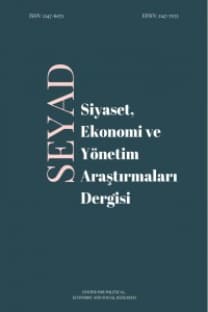Alternatif Finansal Kaynak Oluşturmaya Yönelik Bir Model Önerisi
Birey veya kurumsal olarak sahip olunan tarih, sanat ve antika eserleri elde tutulduğu sürece âtıl bir kaynak olarak durmakta ve piyasa değeri üzerinden finansman aracı olarak kullanılamamaktadır.
Aile şirketleri başta olmak üzere girişimciler alternatif finansman kaynaklarına ve varlıklara ihtiyaç duymaktadır. Bu çalışma kapsamında; finansal kaynaklara ulaşımı kısıtlı veya elindeki âtıl kaynakları gerçek değeri üzerinden teminat olarak kullanamayan aile şirketleri ve girişimciler başta olmak üzere tüm firmalara alternatif finansal varlık ve teminat oluşturma ile ilgili olarak bir model önerilmektedir.
Son dönemde varlık yönetimi konusunda artan finansal modellerin etkileri sanat eserleri konusunda da önemli gelişmelere yol açarak, sanat eserlerinin finansal varlık ve araç olarak tanımlanmalarına neden olmuştur.
Çalışmada, öncelikle pazarın mevcut durumu ve problemleri aktarılacak. Çalışmaya baz teşkil edecek problemin tanımı ile blokzincir ve bağlı teknolojilerin uygulanabilirliğinin çerçevesi çizilecektir. Sanat eserleri konusunda yatırım ve finansal birikimi bulunan, bireysel ve kurumsal çaba sağlayan aktörlerin sistemi irdelemelerine yönelik görüşmeler gerçekleştirilecek ve sorulara cevap aranacaktır. Finansal modelin ana hatlarının belirlenmesinin yanı sıra, temelde hukuksal ve sosyal olarak önerilen modelin etkileri konusunda sektör uzmanlarından görüşler alınacaktır. Sonuç olarak, birey ve kurumların sahip oldukları ve finansal olarak âtıl değerlendirilebilecek sanat eserlerini sürdürülebilir bir finansal bir varlığa dönüştürebilmeleri konusunda farkındalık oluşturulması hedeflenmektedir.
Çalışmanın, kuramsal olarak gelecekte âtıl kaynakların yeni menkul değerler olarak kullanımlarının blokzincir teknolojisi ile uygulanabilirliği konusunda öncü bulguları sağlama potansiyeli vardır.
Anahtar Kelimeler:
Atıl Kaynak, Menkul kıymet, Finansal Varlık, Sanat Eseri, Blokzincir
A Model Proposal for Creating Alternative Financial Resources
As long as historical, artworks and antiquities owned by individuals or institutions are kept in hand, they stand as an inactive source and cannot be used as a financing tool at market value.
Entrepreneurs, especially family businesses, need alternative financing sources and assets. This scope of work; A model for creating alternative financial assets and collateral is recommended for all companies, especially family companies and entrepreneurs who have limited access to financial resources or cannot use their idle resources as collateral over their real value.
The effects of financial models that have increased in asset management recently have led to significant developments in the field of artworks, leading to the definition of works of art as financial assets and instruments.
In the study, first of all, the current situation and problems of the market will be explained. The definition of the problem that will serve as the basis for the study and the framework of the applicability of blockchain and connected technologies will be drawn. Interviews will be held to examine the system and questions will be sought for the actors who have investment and financial experience in artworks and provide individual and institutional efforts. In addition to determining the outline of the financial model, opinions of industry experts will be obtained mainly on the effects of the proposed model legally and socially. As a result, it is aimed to raise awareness about the ability of individuals and institutions to turn their own works of art, which can be considered financially ineffective, into a sustainable financial asset.
Theoretically, the study has the potential to provide pioneering findings on the applicability of future use of idle resources as new securities with blockchain technology
Keywords:
Idle Resource, Securities, Financial Assets, Art Artifact, Blockchain,
___
- Akgiray, Vedat. Blockchain Technology and Corporate Governance Report. OECD, 6 Haziran 2018. http://www.oecd.org/officialdocuments/publicdisplaydocumentpdf/?cote=DAF/CA/CG/RD(2018)1/REV1&docLanguage=En
- Chen, Yan – Bellavitis, Cristiano Chen. “Blockchain distruption and decentralized finance: The rise of decentralized business models”. Journal of Business Venturing Insights, 2 (2020). https://doi.org/10.1016/j.jbvi.2019.e00151
- DA, Deloitte ve ArtTactic. The big Picture: Art & Finance is an emerging industry. Deloitte, 2019. https://www2.deloitte.com/content/dam/Deloitte/lu/Documents/financial-services/artandfinance/lu-art-and-finance-report-2019.pdf
- MacDonald-Korth, Duncan, vd. Blockchain and Financialisation in Visual Arts. The Alan Turin Institute-DACS, 2018. https://www.dacs.org.uk/DACSO/media/DACSDocs/Press%20releases/The-Art-Market-2-0-Blockchain-and-Financialisation-in-Visual-Arts-2018.pdf
- Mülayim, Selçuk. Sanata Giriş. Ankara: Bilim Teknik, 1994.
- Salttürk, Onur. Sanat ve Finans. İstanbul: TSPB. 2019. https://www.tspb.org.tr/wp-content/uploads/2019/11/Gosterge_Guz_2019.pdf
- UKGCSA, UK Government Chief Scientific Adviser. Distributed Ledger Technology: beyond block chain. London: UK Government Office for Science, 2016. https://assets.publishing.service.gov.uk/government/uploads/system/uploads/attachment_data/file/492972/gs-16-1-distributed-ledger-technology.pdf
- Voshmgir, Shermin. Token Economy: How Blockchains and Smart Contracts Revolutionize the Economy. Berlin: BlockchainHub. 2019.
- ISSN: 2147-6071
- Yayın Aralığı: Yılda 2 Sayı
- Başlangıç: 2014
- Yayıncı: Politik Ekonomik ve Sosyal Araştırmalar Merkezi
Sayıdaki Diğer Makaleler
Türkiye’de Karbondioksit Emisyonu ve Ekonomik Büyüme İlişkisi: Yapısal Kırılmalı Testlerden Kanıtlar
Türkiye’de Siyasal Tercihleri Etkileyen Faktörler
Müzakereci Demokrasi İlkeleri Bağlamında Birinci Meclis’te Musul Görüşmeleri
Alternatif Finansal Kaynak Oluşturmaya Yönelik Bir Model Önerisi
